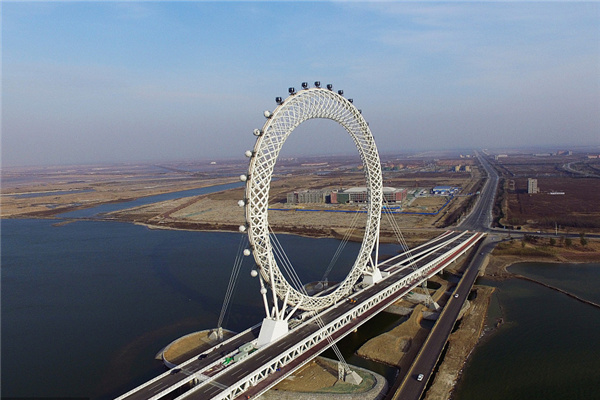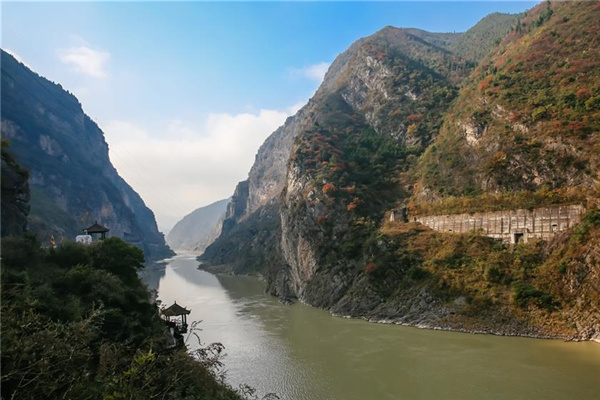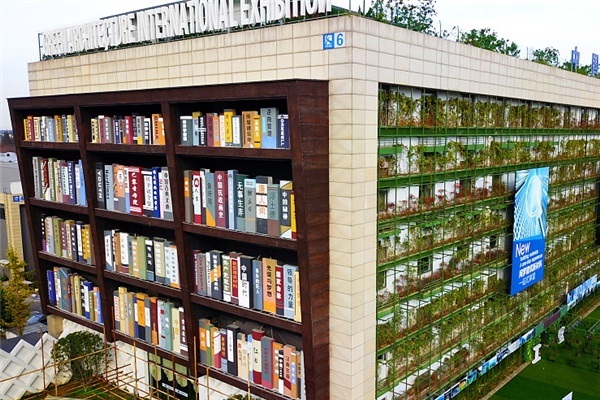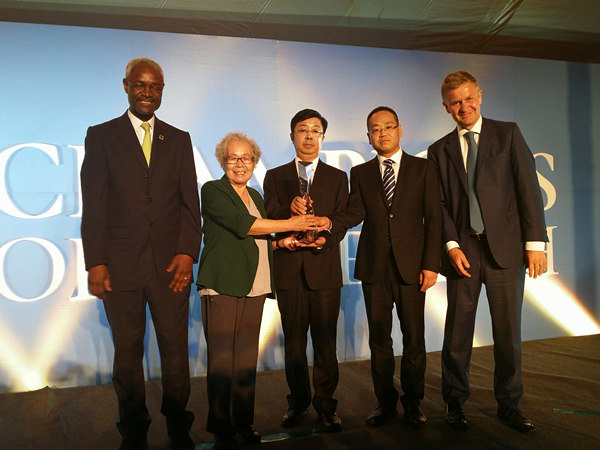

Tibet is undergoing a green revolution, aimed at preserving its environment and developing alternative energy. The plateau's fragile ecology is under pressure from the region's rapid economic growth.
The State Council, China's Cabinet, recently approved a comprehensive plan to protect the environment and combat climate change in the Tibet autonomous region, which covers 1.2 million sq kilometers, by 2030.
"The plan is of great importance to ramp up ecological protection efforts in Tibet, fight global warming, ensure China's ecological safety and nurture the economic and social development of Tibet," said a statement from the National Development and Reform Commission (NDRC).
"It also attempts to curb soil erosion, safeguard biological diversity and promote the use of clean energy in rural areas," the statement said.
|
A Tibetan woman uses a solar cooker to heat water. The Tibet autonomous region has great solar energy potential, enough wind turbines to generate 93 billion kWh annually and rich geothermic resources. CFP |
The government is pushing several hydro-electric, methane and solar power developments in the Tibetan countryside.
"Projects such as natural grassland protection, forest fire prevention, wetland protection, growing forest shelter belts and protecting pastures against desertification will be carried out," said the statement.
Alternative energy is a key part of the plan because Tibet's energy demand has skyrocketed in recent years as the region's economy booms (particularly since the Qinghai-Tibet railway and Nyingchi Airport were completed) and its population grows (up to 2.84 million in 2007 from 1.51 million in the 1970s).
Traditional heat and energy sources such as yak dung are simply not enough to sustain this kind of growth and Tibet does not have coal-fired power stations like other areas of China.
Tibet has fossil fuels; tens of millions tons of coal have been identified in the Nagqu, Chamdo and Kailash areas. But the local government does not plan to mine these reserves for environmental reasons and the considerable logistical hurdles involved with mining at high altitude.
The region is awash in sunlight, basking in about 3,000 hours of sunlight a year. Its hydropower capacity is about 200 million kW (30 percent China's total hydroelectric output). There are more than 1,000 locations across the plateau that local government says can be used to generate geothermal energy. And experts calculate that the region has the potential for more than 90 billion kWh a year of wind power.
Tibet is pushing forward a "firewood substitute strategy," which calls for implementing 250,000 more solar ovens across the region by 2015. The Tibet Energy Study Center has developed portable solar ovens that can be used by herder families.
The local government also plans to build 3.3 million sq m of passive solar houses by 2015. The houses use local materials, feature traditional design and their construction will employ local workers, said Zhong Jishou, deputy director of China National Engineering Research Center for Human Settlements.
The Tiger Mouth hydropower station between Lhasa and Nyingchi will be Tibet's largest hydroelectric station and produce 100 MW of power once finished.
The Chinese Academy of Sciences' Institute of Electrical Engineering and Beijing Corona Co built a 100 kW solar power station in Yangpachen. Corona chief engineer Lin Wei said that it is the first solar power station to be hooked up to the Lhasa power grid and will provide power for 150 households.
There are plans to eventually build a larger solar power station.
Private companies are also involved in greening Tibet.
The US chemical giant DuPont, together with China National Engineering Research Center for Human Settlements and Tsinghua University, is helping build passive solar houses near Mount Qomolangma (known as Mount Everest in the West) on a trial basis. The houses are designed to stay warm in the winter and cool in the summer with minimal use of active heating and cool systems.
(China Daily 03/09/2009 page5)













